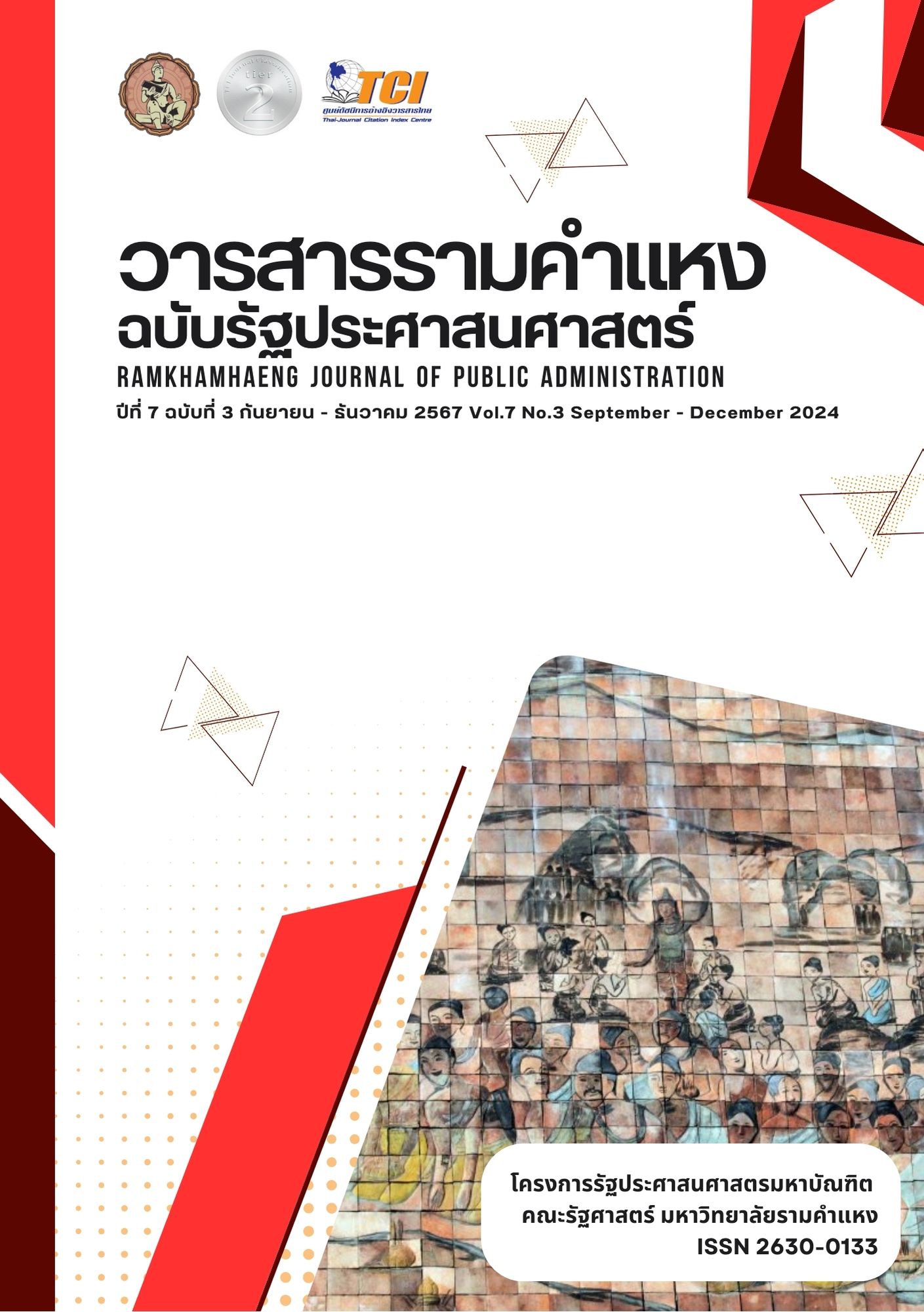Ramyun : Culture Industry in Korean Series
Keywords:
Ramyun, Korean series, culture industry, commodification of cultureAbstract
The objective of this article is to study ramyun from the selected Korean series using concepts on culture industry and the commodification of culture to analyze the production, dissemination, and domination of Korean food culture specifically “ramyun as a late-night meal” which spreads worldwide and becomes viral among Korean people that it turns to be their lifestyle. The study methodology is a qualitative one using documents and information from Korean TV series, YouTube and other social media. The result of the study according to an objective mentioned above can be explained in threefold: (1) Korean drama series, YouTube, and K-pop artists help create and reproduce delicious images of ramyun domestically and internationally: the image of delicious ramyun; the image of how to eat boiling ramyun deliciously…slurping loudly; and the image of happy activities, cooking and eating ramyun, that can be easily done by anyone. (2) Those social media lead to culture industry and the commodification of culture when ramyun made a lot of income to Korea’s economy. (3) Ramyun has long term impacts against health as its ingredients contain high level of calories, carbohydrate, and sodium which may induce diabetes, high blood pressure, stroke, heart attack, etc. Finally, it has been concluded that this kind of culture industry and the commodification of culture are the process of mass deception to influence people that they become victims consciously and lose freedom to be self-awakening.
References
นวรัตน์ ชิ้น. (2560). น้ำแข็งไสเกาหลี บิงซู (Bingsu) : ภาพสะท้อนวัฒนธรรมกระแสนิยมอาหารเกาหลีในสังคมไทย กรณีศึกษา ร้านน้ำแข็งไสบิงซูย่านสยามสแควร์. (รายงานการศึกษาเฉพาะบุคคลปริญญาศิลปศาสตรบัณฑิต). มหาวิทยาลัยศิลปากร, คณะโบราณคดี, ภาควิชามานุษยวิทยา.
Adorno, T. W. (1991). Culture industry reconsidered. In J. Berstein (Ed.), The Culture Industry. London: Routledge.
Adorno, T. W., & Horkheimer, M. (1992). Dialectics of Enlightenment. (John Cumming, Trans.). London: Verso.
BrandAge Team. (2024). “มากินรามยอนที่บ้านเราไหม?” บะหมี่กึ่งสำเร็จรูปเกาหลีทำยอดส่งออกทั่วโลกเกิน 100 ล้านดอลลาร์ได้สำเร็จแล้ว!. สืบค้นจาก https://brandage.com/article/39261
Cullen Hateberry. (2023). คนเกาหลีโชว์ 4 วิธีต้มมาม่าเกาหลีให้อร่อย (สูตรลับแต่ไม่ลับ). สืบค้นเมื่อ 11 กรกฎาคม 2567 จาก
https://www.youtube.com/watch?v=vr_RksZ2CyY
Siwaritemarketeer. (2022). รามยอนเกาหลีใต้อร่อยจน New High ส่งออกโตทะลุ 71 ล้านดอลลาร์. สืบค้นเมื่อ 11 กรกฎาคม 2567 จาก
https://marketeeronline.co/archives/261053
Chang, Ch. (2018). The Role of Korean Ramyeon. Retrieved 11 July 2024, from
Han, K. (2015). Noodle Odyssey: East Asia and beyond in K. O. Kim (ed) Re-orienting Cuisine: East Asian Foodways in the Twenty-First Century. New York and Oxford: Berghahn Books, 91-107.
Hamzy. (2021). Spicy Ramyun with Tteok, Mandoo / REAL SOUND / ASMR MUKBANG. Retrieved 26 July 2024, from https://www.youtube.com/watch?v=YZ9kLOzSFGI&t=309s
Kaksubbers. (2016). (Thaisub) 160928 weekly idol - GOT7 EP. 270 (2/2). Retrieved 26 July 2024, from
https://www.youtube.com/watch?v=4mRbWIrjci0
Kim, Y. (2013). Korea Wave Pop Culture in the Global Internet age, Why popular? Why now?. London and New York: Routledge.
Kim, E. G., and S. Y. Jeon (2011). Seungseungjanggu Nongshim Wuipungdangdang Samyang. Seoul: Moneyplus.
Oh, Y. (2018). The Success and the Popularity of Instant Noodle (Ramyun) in South Korea. Retrieved 11 July 2024, from https://www.grin.com/document/584815
Park, S. C., S. H. Ahn and D. H. Lee. (2015). Vulnerable science at the border of safety and risk, crisis and emergency management. Theory and Praxis. 8: 135-159.
Shin, H. J., E. Cho, H. Lee, T. T. Fung, E. Rimm, B. Rosner, J. E. Manson, K. Wheelan and F. B. Hu. (2014). Instant noodle intake and dietary patterns are associated with distinct cardiometabolic risk factors in Korea. The Journal of Nutrition. 144(8): 1247-1255.
Teichman, J. A. (2016). South Korea: Authoritarianism, democracy, and the struggle to maintain inclusive development in The Politics of Inclusive Development: Policy, State Capacity, and Coalition Building. London: Palgrave Macmillan, 132-158.
The Star. (2024). South Korea Instant Noodle Exports Hit Record High. Retrieved 6 June 2024, from
Wang, L., G. G. Hou; Y. Hsu and L. Zhou. (2011). Effect of phosphate salts on the Korean non-fried instant noodle quality. Journal of Cereal Science. 54(3): 506-512.
Downloads
Published
How to Cite
License
Copyright (c) 2024 วิสาขา เทียมลม

This work is licensed under a Creative Commons Attribution-NonCommercial-NoDerivatives 4.0 International License.



